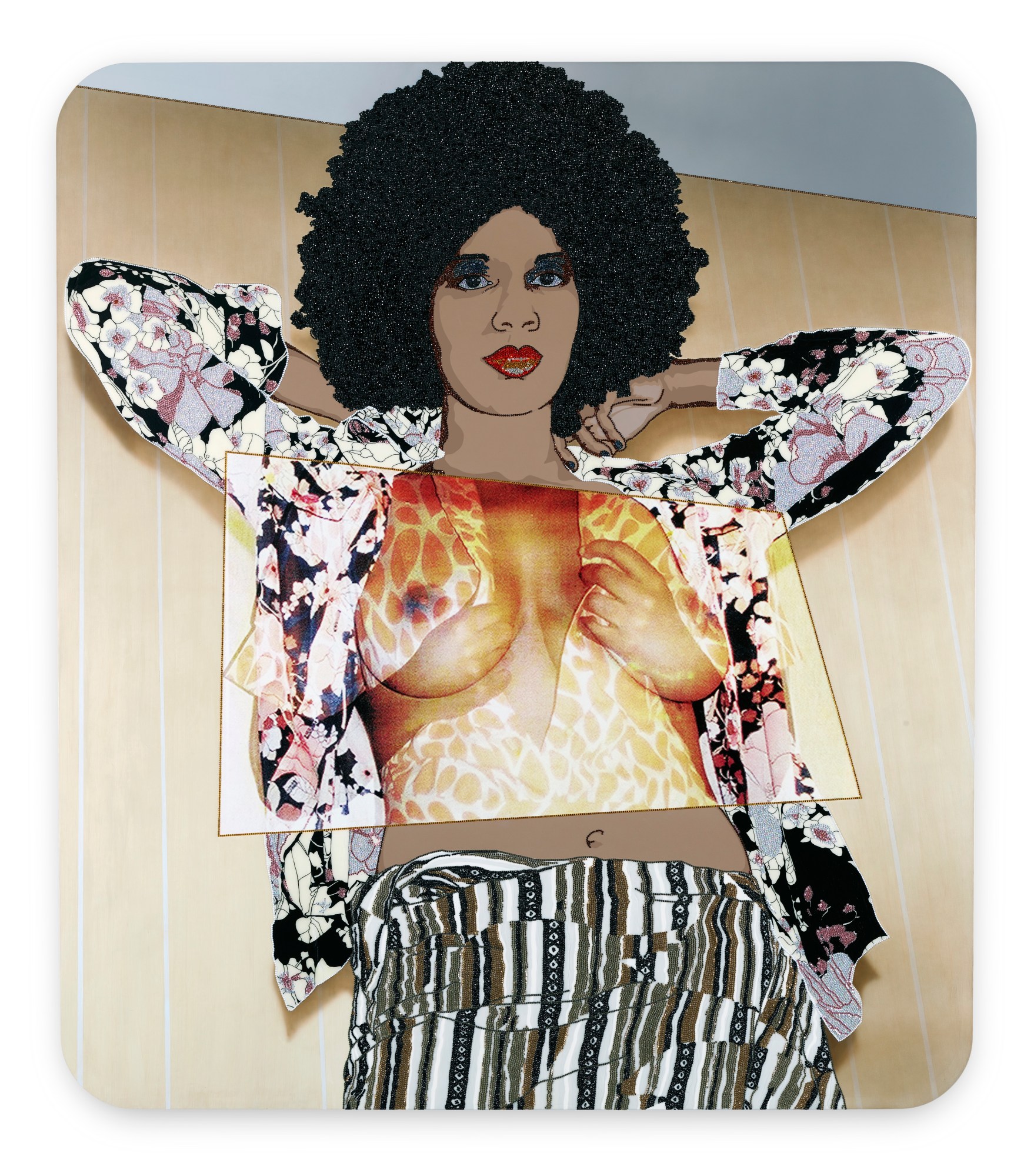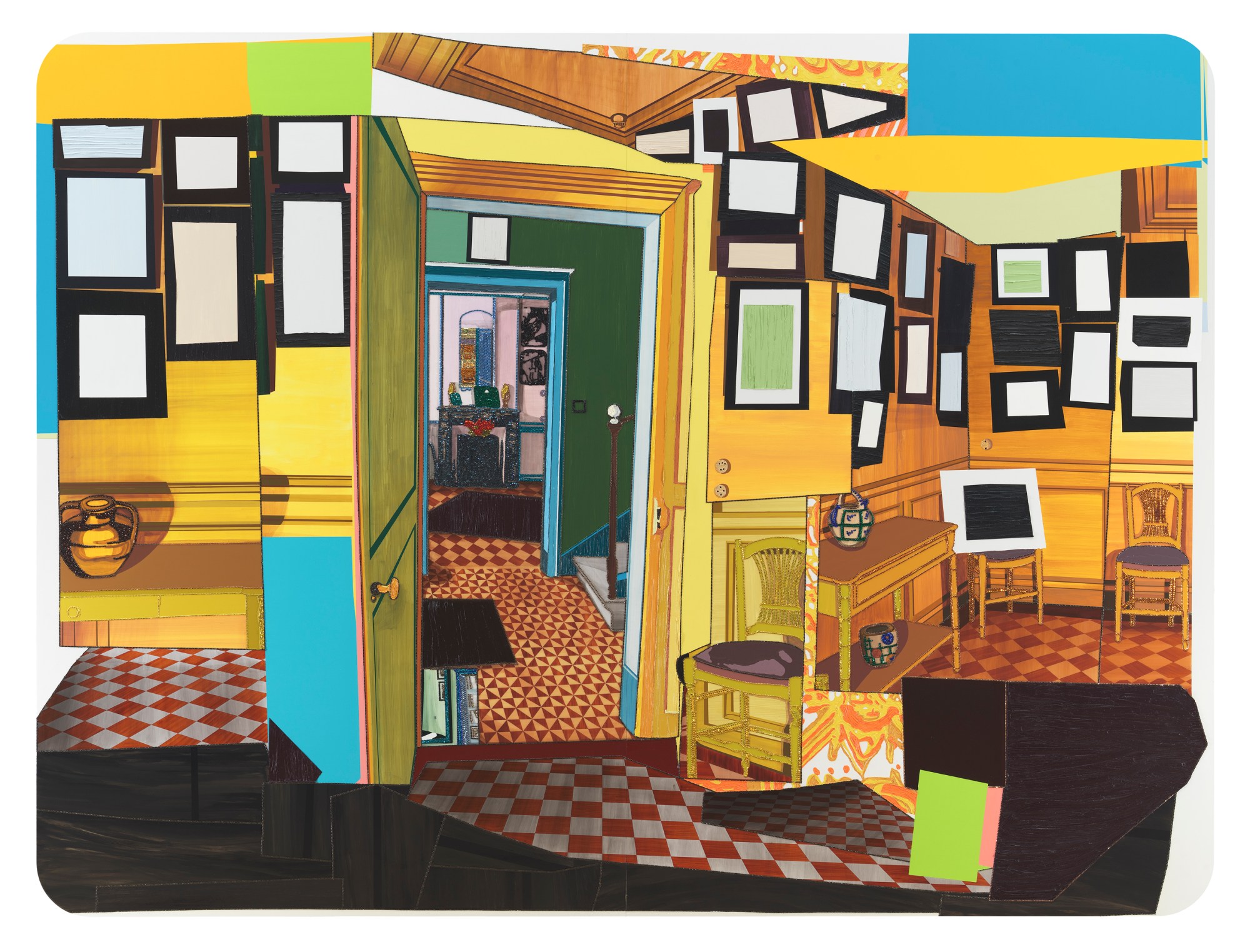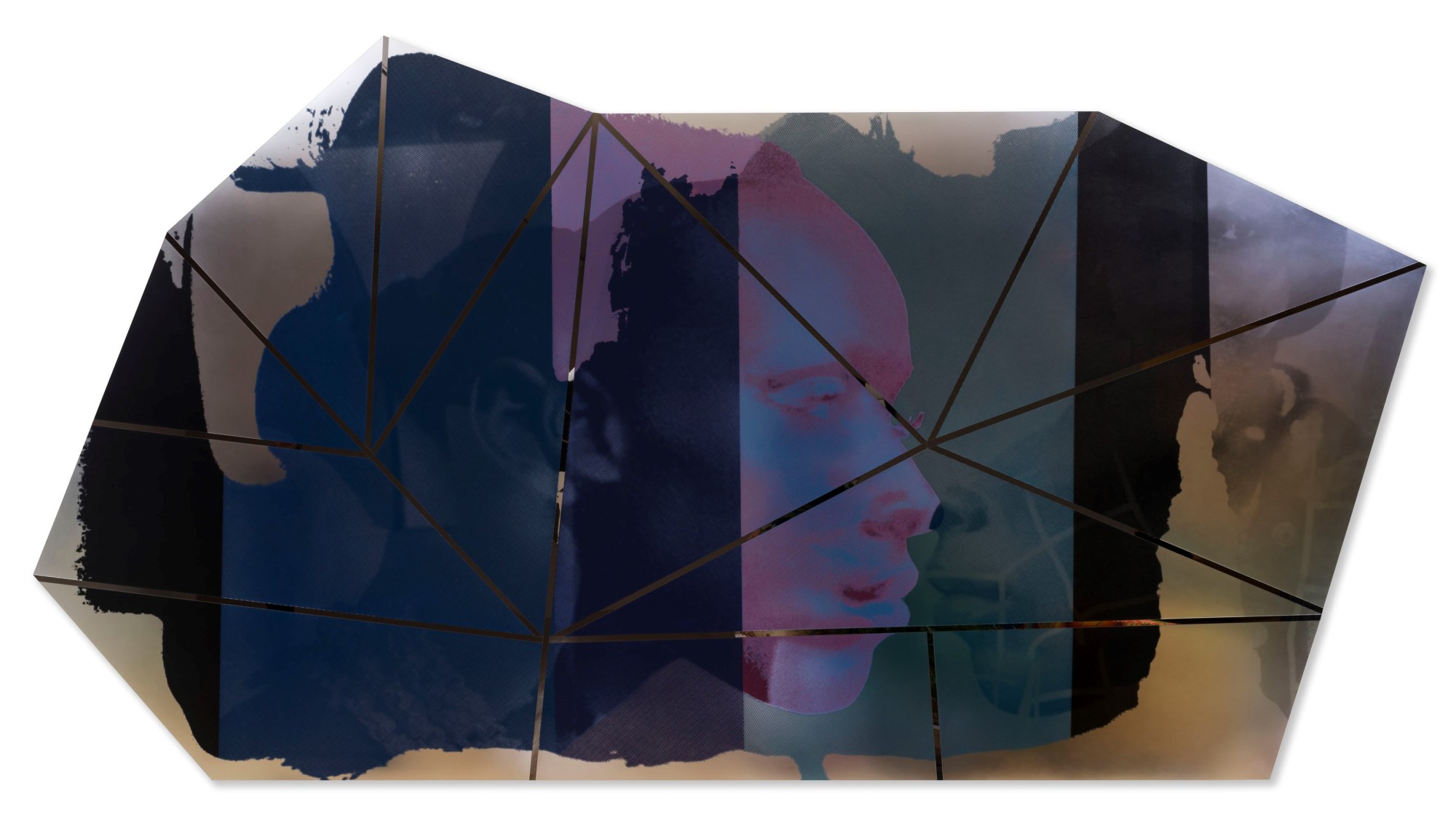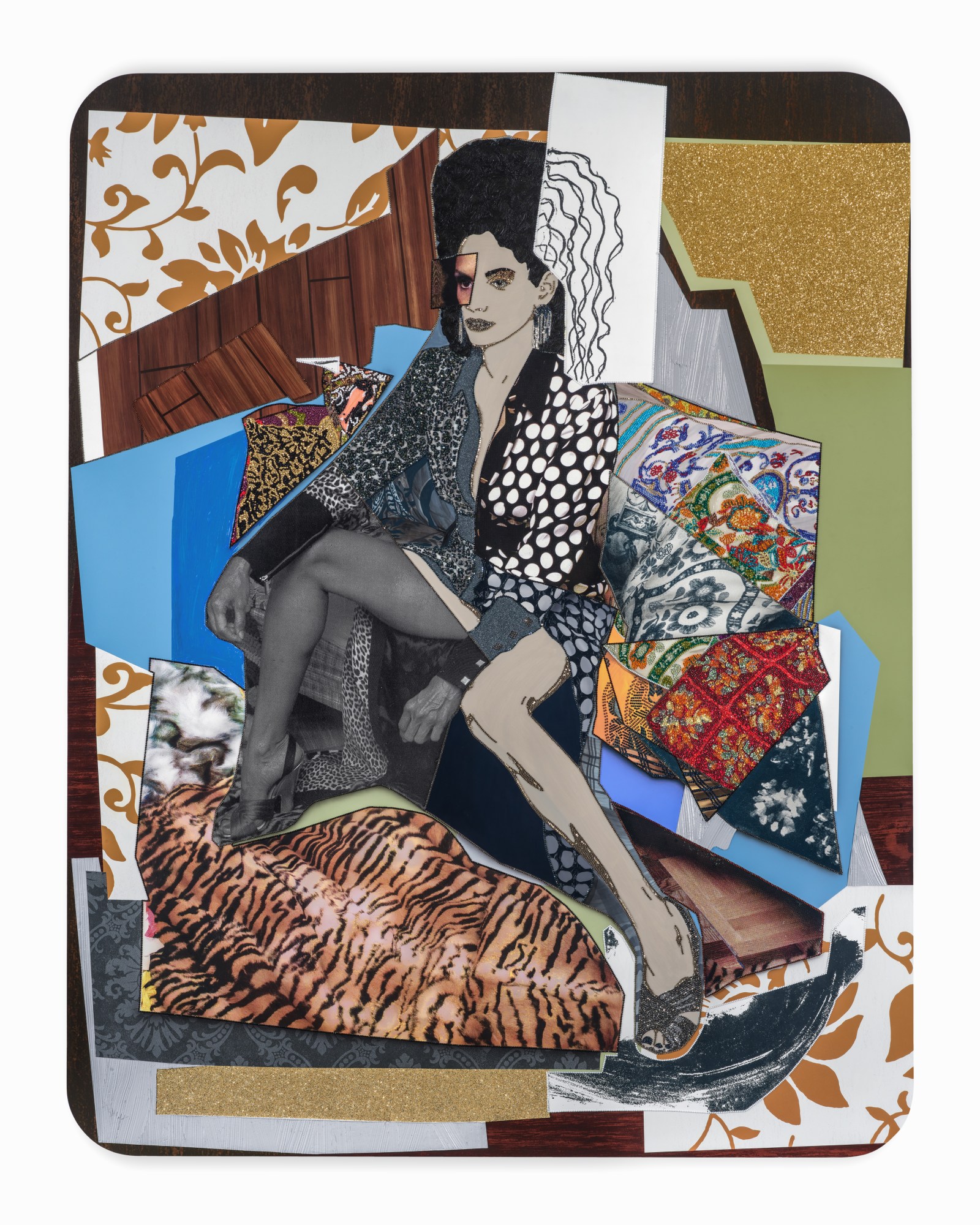One of Mickalene Thomas’s most well-known works is the album cover for Solange’s 2013 EP, True. The youngest Knowles sister sits in the center of the image, bordered by a hodgepodge collage of Grandma’s couch-esque prints. By taking the familiar objects found in black homes and skewering them, the work is simultaneously situated in black domesticity and black fantasy. This is Mickalene’s forte. And the Yale MFA graduate leaned fully into her distinctive aesthetic for her new exhibit at the Seattle Art Museum, showing alongside Robert Colescott and Kerry James Marshall. These 70s-tinged paintings feel groovy and retro, the women rocking afros in them reminding you of Foxy Brown. However, the New York-based artist is still pushing her art into new territories. She has two shows running simultaneously on completely different coasts. For her show at the North Carolina Museum of Art, she turns portraits of iconic black celebrities like Diahahn Caroll and Naomi Simms into abstractionist paintings. Mickalene’s artistic mission becomes clear through photographing her mother nude and crafting iconic pop culture imagery. It’s to carve out a space for black women in the art world.
Mickalene talks to i-D about forming her distinctive style and what advice she has for aspiring artists.

What are you exploring in your new show at the Seattle Art Museum?
In the SAM show Robert Colescott, Kerry James Marshall, and I collectively examine the history of black culture alongside the history of Western art. In each of our works there is a direct line to the European art history canon, but with some deliberate deviations and liberties. Included in the show are a few of my older pieces such as Le Dejeuner Sur L’herbe — a reference to the iconic work of Manet — in addition to three new works I created for the show. These new works serve both as a colloquy with my peers Colescott and Marshall and an expansion of the themes of art history and the black body.

How did your multimedia collage aesthetic come about? How did materials like sequins and rhinestones find their way into your work?
Materiality is one of the most significant aspects of my practice. I like things to be textural and pattern-oriented, which can be difficult to fully convey in a painting. Beginning with the process of collage allows me to better translate those qualities when I create the larger works. I then utilize the different textures of rhinestones, glitter, oil, acrylic, silkscreen, and varnish to recreate the sense and feeling of a collage on canvas and to establish dynamic compositions that play with formal aspects of painting like color, form, and line.
I started playing around with rhinestones when I became interested in notions of pointillism during my undergrad years. They provide a perfect combination of content, process, and material, and as a “decorative” material they serve to dispute the standard conception of what a painting is, and can be. There is also a great satisfaction in the slow meditative process of gluing each and every rhinestone to the surface of the painting. Ultimately, my choice of material represents the notion of artifice, constructed ideas, and how we adorn our environments and ourselves.

You attended the highly prestigious Yale MFA program, which has produced a number of influential black artists as of late. What was your experience there like?
I was there at a really good time. In many ways, the environment at Yale — the exposure to my peers and the faculty — was absolutely essential to my growth as an artist. Kehinde Wiley and Iona Rozeal Brown were there at the same time and Wangechi Mutu had just graduated, so there was a group of us young black artists all in one place to really encourage each other and challenge each other. I also took a photo class with the photographer David Hilliard, and he was the first to instruct me to further explore my practice by photographing my mother.

For struggling young artists, it can be particularly hard to see the light at the end of the tunnel. What advice do you have for them?
If you can’t see the light at the end of the tunnel, then you don’t have faith in your journey. I learned to never give up. The struggle is real and necessary.

I read that you initially started out using your mom as a subject. How has your relationship influenced your work?
Growing up, watching my mother work as a professional model during the 70s and 80s, I was always influenced by her glamour, tenacity, and gracefulness. When I first started to take photographs as a student at Yale, she was the only person that I could convince to pose nude for me. Working with her as a model really helped me understand how her charisma related to me, to my own femininity. Her tenacity not only continues to spark my career today, but her charisma is something that I always want to carry with me as well.

